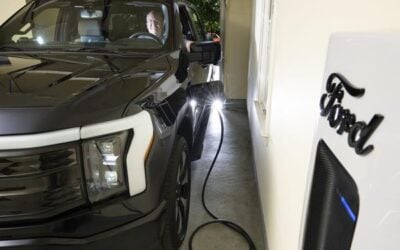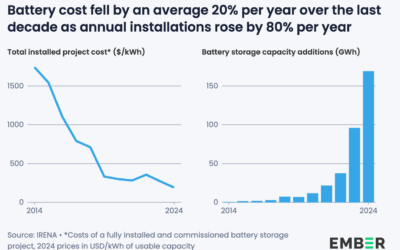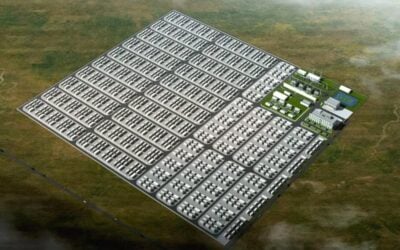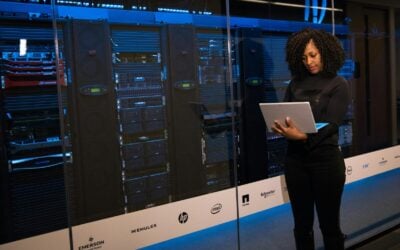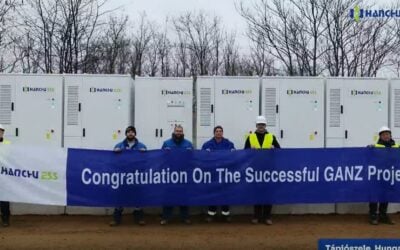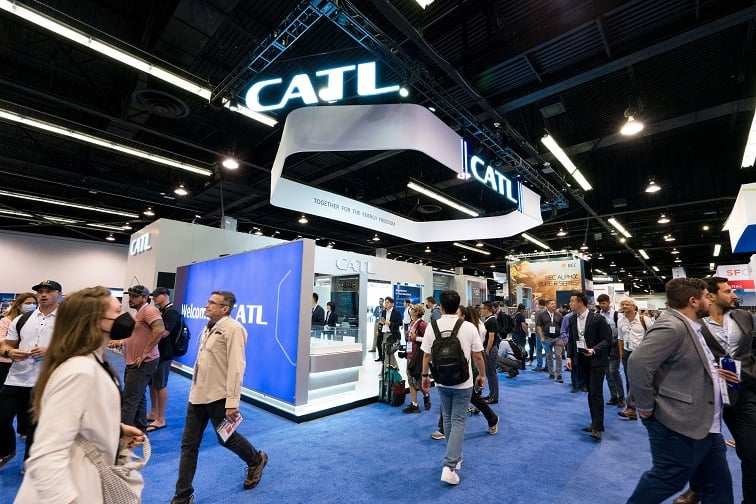
The world’s largest lithium-ion company CATL has released its Q3 results, with revenue growth recovering from the previous period, but with its market share ‘somewhat impacted by capacity constraints,’ a company executive said.
On the evening of 20 October, CATL disclosed its Q3 2025 financial report to the Hong Kong Stock Exchange. According to the report, in Q3 2025, CATL generated revenue of RMB104.186 billion (US$14.6 billion), a year-on-year increase of 12.9%, and net profit attributable to shareholders of RMB18.549 billion, a year-on-year increase of 41.21%.
The firm completed its second listing in May on the Hong Kong Stock Exchange, and a few months later revealed a 1% fall in revenues in the first half of the year. The company’s first listing was on the Shenzhen Stock Exchange in June 2018.
Energy storage figures
In terms of shipments, CATL’s total shipments of power and energy storage battery reached nearly 180GWh in Q3, with energy storage batteries accounting for approximately 20%, or about 36GWh.
Try Premium for just $1
- Full premium access for the first month at only $1
- Converts to an annual rate after 30 days unless cancelled
- Cancel anytime during the trial period
Premium Benefits
- Expert industry analysis and interviews
- Digital access to PV Tech Power journal
- Exclusive event discounts
Or get the full Premium subscription right away
Or continue reading this article for free
Energy storage battery shipments grew faster than those of power batteries, overseas exports made up around 20% of the total, while the domestic market accounted for around 80%.
Unlike CATL’s H1 report, its Q3 report does not provide a detail revenue breakdown between EV and energy storage battery sales, nor for international and domestic sales. It only provided the approximate proportions of shipments for Q3 2025.
Its international sales have in the recent been 30-35% of the total, in both FY 2024 and H1 2025. With higher average selling prices, 20% international shipments could still translate to 30% of revenues.
Financials
In the first three quarters of this year, the company recorded revenue of RMB283.072 billion, a year-on-year increase of 9.28%, while net profit attributable to shareholders amounted to RMB49.034 billion, a year-on-year increase of 36.20%.
| ITEM | Current Reporting Period | Change From the Same Period Last Year (%) | From the Beginning of the Year to the End of the Reporting Period | Change From the Same Period Last Year from the Beginning of the Year to the End of the Reporting Period (%) |
| Operating Revenue (RMB thousand) | 104,185,734 | 12.90% | 283,071,987 | 9.28% |
| Net Profit Attributable to Shareholders (RMB thousand) | 18,548,970 | 41.21% | 49,034,109 | 36.20% |
| Net Profit Attributable to Shareholders (Excluding Non-Recurring Items) (RMB thousand) | 16,421,757 | 35.47% | 43,619,225 | 35.56% |
| Net Cash Flow from Operating Activities (RMB thousand | — | — | 80,660,430 | 19.60% |
| Basic Earnings Per Share (RMB/share) | 4.10 | 37.23% | 11.02 | 34.56% |
| Diluted Earnings Per Share (RMB/share) | 4.10 | 37.34% | 11.02 | 34.67% |
| Weighted Average Return on Equity (ROE) | 6.13% | -0.21% | 17.76% | 0.03% |
In Q3 2025, CATL generated revenue of RMB 104.186 billion, and net profit attributable to shareholders of RMB 18.549 billion. Data Source: CATL Q3 Financial Report.
Capacity constraints: expansion in China and Europe
Since the release of China’s Energy Storage Policy Document No. 136, provinces across the country have successively rolled out detailed implementation guidelines, driving rapid growth in the domestic energy storage market.
CATL noted that its current capacity is fully utilised, and it is stepping up efforts to expand capacity. As new capacity is gradually brought online, CATL expects to see an increase in shipments of its domestic energy storage products.
At the earnings briefing, Jiang Li, Board Secretary and Vice President of CATL, stated: “This year, CATL’s market share has been somewhat impacted by capacity constraints. That said, as capacity is gradually brought online, deliveries of products like power batteries and energy storage batteries will improve significantly.”
Jiang Li further noted that CATL’s newly launched 587Ah energy storage cell has struck an optimal balance across three key performance metrics: energy density, safety margins, and long cycle life. The company is currently accelerating the mass production pace of the 587Ah cells to meet market demand, and the share of 587Ah products is expected to rise gradually in the future.
According to the reports, CATL is currently advancing its global capacity construction at full speed. Regarding domestic capacity expansion, the company is scaling up production bases in Jining(Shandong), Ruiqing (Guangdong), Yichun (Jiangxi), Xiamen (Fujian), Qinghai and Ningde (Fujian). The Jining base in Shandong alone is expected to add over 100GWh of energy storage capacity by 2026.
In overseas markets, CATL’s German plant commenced mass production in 2024 and had since continued to optimise its operations. The core production line equipment for the first phase of its Hungarian plant has been delivered and is currently being commissioned, with installation and commissioning expected to be completed by the end of 2025.
For the Spanish project, CATL has completed preliminary approval procedures, formally established a joint venture, and plant construction is set to begin shortly. The Indonesian battery industry chain project, with a planned capacity of 15GWh for both power and energy storage applications, is scheduled to begin production in H1 2026.
CATL stated that with the economic viability becoming increasingly evident, the energy storage business model is maturing, leading to rapid growth in both domestic and international energy storage demand.
The global expansion of AI data centers is also fueling substantial electricity demand. Solar-plus-storage systems can serve as the primary power source for data centers, driving long-term, stable green power output.

